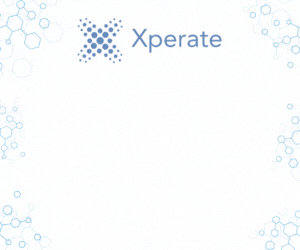Are you creating enough feedback intelligence? Find out with MyCustomerLens
Professional services firms thrive on strong relationships. Those who discover and respond to client needs quickly, have a competitive advantage.
When we talk to Marketing, Business Development or Client Listening teams about how they would future-proof their client listening, we hear a common story. Amplifying the voice of the client is rising up the priority list for decision-makers.
In this resource we define what Feedback Intelligence is, the 5 barriers to generating the Feedback Intelligence you need and steps you can take to start creating more Feedback Intelligence.
Amplifying the voice of the client
They want to listen to more clients, more often, and do more with what they hear. In short, they want more feedback intelligence.
This makes sense. Clients are evaluating professional services just like they evaluate the other services in their life. Expertise is no longer enough. As client needs and expectations evolve, firms are now being judged on the overall client experience.
In a bid to keep their finger on the pulse, forward-looking firms are moving on from traditional customer feedback processes. Sporadic research and annual surveys are being replaced by an ‘always-on’ model of customer feedback.
Behind the scenes, their culture is also changing. Firms are shifting from a disconnected “I know my clients” model to a holistic “we know our clients” model.
This shift provides fresh and relevant insights that are available to all decision-makers. This continuous feedback intelligence then fuels business growth and differentiation.
What is feedback intelligence?
Feedback intelligence is the shared actionable insights created by listening to your customers. Depending on your role, these customers could be clients, employees or the wider market of prospects. The insights tell decision-makers what customers are experiencing now, and what they need and expect next.
For many firms, feedback intelligence is the outputs of their client listening programme. Raw feedback is collected and turned into actionable insights. The thing is, the traditional way of doing this doesn’t cut it in a hybrid office.
Losing touch with clients happens too slowly to notice, until it’s too late to respond
The barriers to scaling up client listening
So what’s stopping firms from listening to more clients more often? While there is a myriad of firm-specific reasons, there are also some common themes.
Barrier 1 – Feedback data is stuck in different silos
Client feedback can come in various forms and from different sources. It could be from interviews, surveys, online reviews, or even just a passing comment in a meeting or email.
As a result, feedback ends up scattered in different places. This causes blindspots as different teams have different information and assumptions. To improve client listening, firms need a single source of truth where both formal and informal feedback can be collected in one central place.
Barrier 2 – Analysing feedback is a manual process
Closed questions make it easy to graph data, but tough to take action on it. When you limit options with multiple-choice questions, it’s hard to understand the ‘why’ behind responses.
On the other hand, open questions give people the freedom to share what’s on their mind. They can reveal new needs, emotions, and expectations. But how do you make sense of all that unstructured data?
Many companies still have to manually review comments, and it’s a slow and subjective process. Adding tags to responses helps a bit, but it’s not consistent or scalable. With customers sharing more feedback than ever before, we need a better solution.
To scale up client listening, companies are turning to automated text analysis, leveraging AI. Dedicated machine learning algorithms can instantly turn raw feedback into actionable insights. Automating text analysis is key to unlocking more feedback intelligence.
Barrier 3 – Requesting feedback is a subjective process
“Now’s not the right time to ask for feedback”. I get it, fee earners would rather clients responded to emails than surveys. But when is the right time?
Only asking when the work is done, or when the client is in a good mood, is a false economy. At best it limits the breadth of feedback. At worst, it generates feedback when it’s too late to respond.
Forward-looking firms are moving to an always-on approach to client listening. They want to make it easy to share feedback when the client is ready to share, not just when the firm is ready to ask. This continuous listening becomes possible when feedback analysis becomes automated.
Barrier 4 – Insights quickly become old news
Manual feedback analysis takes time. When it’s combined with periodic data gathering, the insights quickly become old news.
But decision-makers are hungry for current insights. They want to see emerging trends, new needs and expectations. So no matter how good the formal insights are, if they’re out of date they will struggle to compete against recent anecdotes and assumptions.
One of the attractions of always-on client listening, is the fresh insights. Client listening teams are seeing what clients are experiencing right now. This makes it easier to align the business and deliver a differentiated brand experience.
Creating more feedback intelligence
With professional services firms needing to compete and differentiate on experience, there is a growing demand for keeping a finger on the pulse. Creating a steady flow of feedback intelligence requires:
- Creating a central place for gathering all formal and informal feedback
- Using AI to automate the analysis of unstructured text data
- Moving reports from static documents to real-time dashboards
- Shifting the collective mindset from “I know my clients” to “we know our clients”



